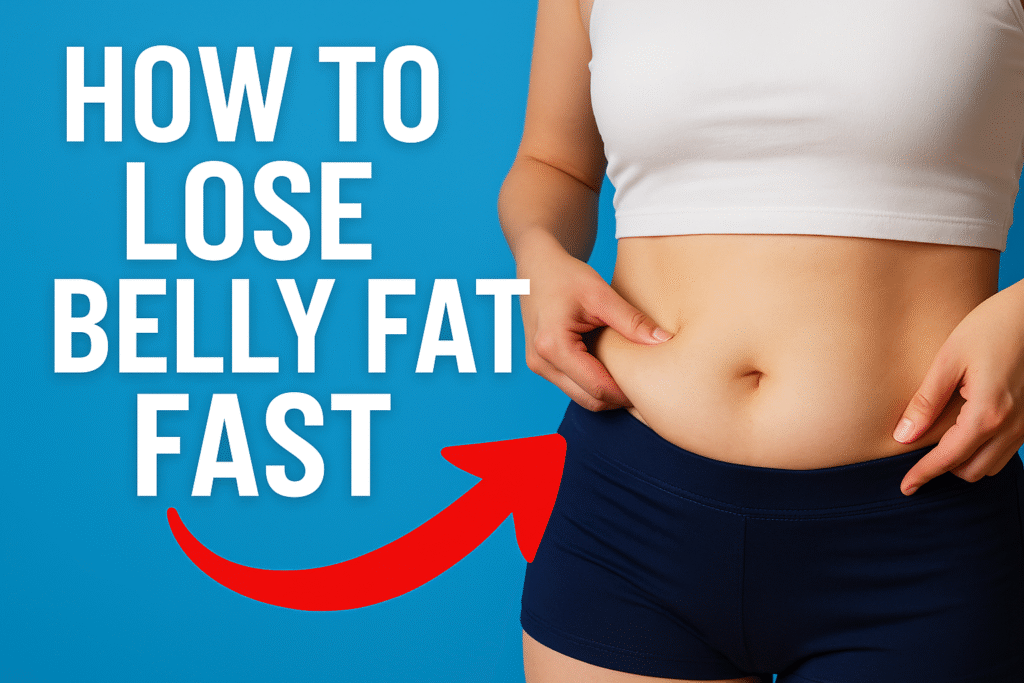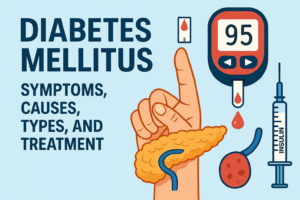How to Lose Belly Fat Fast

Belly fat is one of the most stubborn areas to lose weight from, and if you’re reading this, chances are you’re frustrated with that lingering midsection that just won’t budge. You’re not alone. Whether it’s for health reasons, aesthetics, or simply wanting to feel more confident in your clothes, getting rid of belly fat is a common goal—and fortunately, it’s achievable with the right approach.
In this post, we’ll break down practical, science-backed strategies to help you lose belly fat fast—but more importantly, in a sustainable way. Forget crash diets and miracle supplements. Let’s focus on what actually works.
First, Understand What Belly Fat Really Is
Before we dive into how to lose it, let’s clarify what belly fat actually is. There are two main types:
– Subcutaneous fat: This is the layer of fat right under your skin. You can pinch it, and it’s more cosmetic.
– Visceral fat: This surrounds your internal organs. It’s deeper, more dangerous, and linked to heart disease, type 2 diabetes, and certain cancers.
While both types contribute to that bloated belly look, visceral fat is what you -really- want to target for better health. Luckily, the strategies below help reduce both.
1. Rethink Your Diet (Don’t Just Eat Less—Eat Smarter)
No matter how many crunches you do, if your diet is off, your belly fat won’t budge. The key isn’t starving yourself—it’s fueling your body with the right foods.
Focus on:
– Whole, unprocessed foods: Think vegetables, lean proteins, fruits, nuts, and whole grains.
– Protein at every meal: Protein keeps you full, helps preserve muscle mass, and boosts metabolism. Eggs, chicken, lentils, Greek yogurt, and tofu are great choices.
– Healthy fats: Avocados, olive oil, and fatty fish like salmon can actually -help- you burn fat, when consumed in moderation.
– Fiber-rich foods: Fiber helps digestion, reduces appetite, and stabilizes blood sugar. Aim for beans, oats, berries, and leafy greens.
Cut back on:
– Refined carbs and sugar: Soda, white bread, pastries—these spike insulin and encourage fat storage.
– Alcohol: Sorry, but “beer belly” isn’t just a myth. Alcohol can add empty calories and slow down fat burning.
– Processed snacks: Chips, cookies, and fast food not only add calories but also cause inflammation.
Pro Tip: You don’t need to count every calorie, but being aware of portion sizes and mindless snacking is crucial. A food journal can help you spot habits you didn’t even realize you had.
2. Train Smart, Not Just Hard
You’ve probably heard that exercise is important, but -how- you exercise makes a big difference when it comes to belly fat.
High-Intensity Interval Training (HIIT)
If you’re short on time but want maximum results, HIIT is your friend. These are short bursts of intense activity (like sprinting or jumping) followed by brief rest periods. It boosts your heart rate, burns more fat, and keeps your metabolism elevated even after you’re done.
Example HIIT workout:
– 30 seconds of jumping jacks
– 30 seconds rest
– 30 seconds of burpees
– 30 seconds rest
– Repeat for 15–20 minutes
Strength Training
Building muscle helps you burn more calories—even at rest. Focus on compound movements like:
– Squats
– Deadlifts
– Push-ups
– Pull-ups
Strength training 3–4 times a week can significantly reduce overall body fat, including around your waist.
Walking and Low-Intensity Movement
Don’t underestimate the power of walking. Just 30–45 minutes a day at a brisk pace can help reduce visceral fat. It also improves insulin sensitivity, especially if you walk after meals.
3. Manage Your Stress (Yes, It Matters)
Here’s something most people overlook: chronic stress contributes to belly fat. When you’re stressed, your body releases cortisol, a hormone that encourages fat storage—particularly around the abdomen.
What can you do?
– Meditation: Even 10 minutes a day can make a difference.
– Deep breathing: Slow, controlled breaths calm your nervous system.
– Get outside: Nature walks or just sitting in the sun can reduce cortisol.
– Make time for fun: Hobbies, laughter, music—anything that brings you joy helps manage stress levels.
Reducing stress won’t make belly fat disappear overnight, but over time, it plays a major role in long-term fat loss and mental health.
4. Sleep Like It’s Your Job
If you’re not sleeping at least 7–8 hours per night, you’re setting yourself up for failure. Lack of sleep throws off your hunger hormones (ghrelin and leptin), increases cravings, and slows down metabolism.
Tips for better sleep:
– Stick to a sleep schedule, even on weekends.
– Avoid screens 1 hour before bed.
– Cut off caffeine by mid-afternoon.
– Keep your bedroom cool and dark.
One study found that people who slept only 5 hours per night were 55% more likely to become obese compared to those who slept 7–8 hours. Don’t skip this step.
5. Drink More Water (and Ditch Sugary Drinks)
Water is essential in every fat-loss journey. It helps digestion, reduces bloating, and can curb unnecessary snacking (sometimes we think we’re hungry when we’re actually thirsty).
Aim for at least 2–3 liters per day. If you’re more active or live in a hot climate, you may need more.
Also, swap sugary drinks like soda, sweetened iced tea, and energy drinks for water, herbal tea, or black coffee. Liquid calories are sneaky and often overlooked.
6. Be Patient, But Stay Consistent
Here’s the honest truth: You can’t spot-reduce fat, and you won’t lose belly fat overnight. But with consistency, you’ll start seeing results—in your energy levels, your waistline, and how your clothes fit.
Track your progress in more than one way:
– Take waist measurements every two weeks.
– Notice how your clothes feel.
– Take progress photos every 3–4 weeks (even if you don’t share them).
And remember, weight on the scale isn’t everything. You can gain muscle and lose fat at the same time, which may not reflect a huge drop in pounds, but will absolutely transform your body composition.
7. Don’t Fall for Gimmicks
Quick fixes sound appealing, but they rarely deliver lasting results. Things to avoid:
– Fat-burning pills or teas
– Waist trainers
– Extremely low-calorie diets
– “Detox” cleanses
Most of these either dehydrate you temporarily or cause rebound weight gain. Real, lasting fat loss comes from habit changes—not hacks.
Make It a Lifestyle, Not a Sprint
Losing belly fat fast is possible, but “fast” still means a few weeks to a few months depending on your starting point and how aggressively you approach it. The good news? If you focus on nourishing your body, moving intentionally, and managing your stress, the belly fat will go—and more importantly, stay gone.
You don’t need perfection. You need consistency. Progress is made one meal, one workout, one day at a time.
So start today. Not with a full-on overhaul, but with one simple step—maybe it’s drinking more water, cooking dinner at home, or taking a walk. Small actions, repeated consistently, lead to big changes.
Frequently Asked Questions About Losing Belly Fat
1. Can I lose belly fat without exercise?
Yes, but it’s slower. Diet plays a major role—some say up to 80%—in fat loss. You -can- lose belly fat by eating a calorie-controlled, nutritious diet. However, exercise accelerates the process, improves muscle tone, boosts metabolism, and helps you keep the fat off long term.
2. What foods help burn belly fat?
No food -melts- fat, but some support fat loss better than others. Foods high in protein (chicken, eggs, lentils), fiber (oats, beans, leafy greens), and healthy fats (avocado, olive oil, nuts) keep you full longer and stabilize blood sugar—two key elements in losing belly fat.
3. Do sit-ups or crunches help get rid of belly fat?
Not really. They can strengthen your core muscles, but they won’t remove the fat covering them. You can’t spot-reduce fat from one area. Instead, focus on full-body fat-burning methods like HIIT, walking, and strength training, paired with a clean diet.
4. How long does it take to lose belly fat?
It depends on your starting point, genetics, and how consistent you are. Some people see noticeable changes in 3–4 weeks; for others, it might take a couple of months. A healthy, sustainable rate of fat loss is 1–2 pounds per week. Stick with it—you’ll see results.
5. Is belly fat dangerous?
Yes, especially visceral fat, which surrounds your organs. It increases the risk of heart disease, type 2 diabetes, high blood pressure, and even some cancers. Losing belly fat isn’t just about appearance—it’s a major move toward better health.
6. Should I avoid all carbs to lose belly fat?
No need to cut all carbs. Instead, focus on complex carbs (like quinoa, sweet potatoes, and oats) and limit refined or sugary ones. Carbs are your body’s fuel, and cutting them too drastically can lead to cravings, mood swings, and low energy.
7. Do fat-burning supplements work?
Most don’t. Some may slightly increase metabolism, but often at the cost of side effects like jitteriness or digestive issues. Plus, the effects are minimal without proper diet and exercise. Focus on natural methods first—supplements should be a last resort, and only under professional guidance.
8. Can stress really cause belly fat?
Yes. Chronic stress elevates cortisol, a hormone linked to increased fat storage—especially around the midsection. Stress management techniques like breathing exercises, meditation, and better sleep can help reduce cortisol levels and improve fat loss.
9. What’s the best time to work out for fat loss?
The best time is whenever you can do it consistently. Some people prefer morning workouts for an energy boost, while others find they perform better later in the day. Consistency matters more than timing.
10. Will drinking water help reduce belly fat?
Water doesn’t directly melt fat, but it helps in several ways: curbing hunger, supporting digestion, and preventing water retention (which can make your belly look bloated). Drinking enough water also helps your metabolism function properly.






